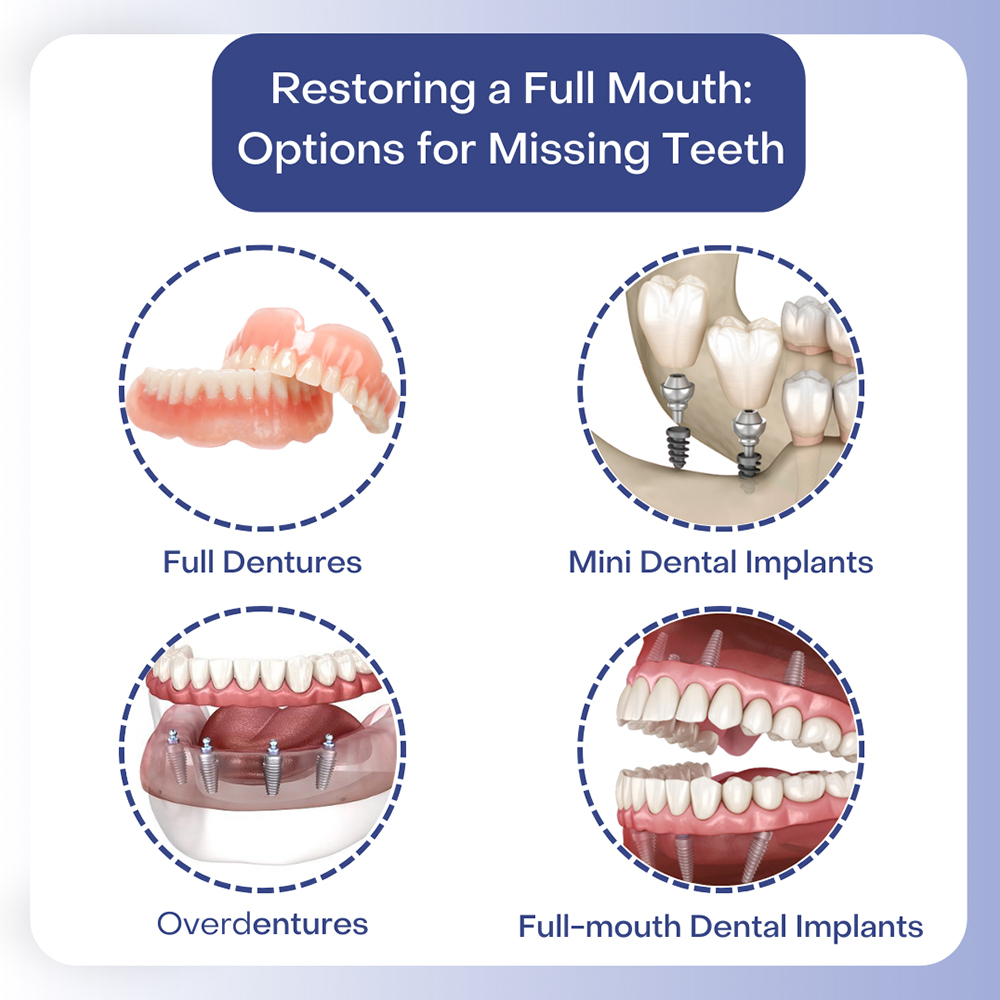Dental Sense for Dummies
Dental Sense for Dummies
Blog Article
The 5-Minute Rule for Dental Sense
Table of ContentsIndicators on Dental Sense You Need To Know6 Simple Techniques For Dental SenseThe Basic Principles Of Dental Sense Facts About Dental Sense Revealed
are clinical devices operatively implanted into the jaw to bring back a person's capacity to chew or their appearance. They give assistance for man-made (fake) teeth, such as crowns, bridges, or dentures. When a tooth is lost as a result of injury or illness, a person can experience difficulties such as fast bone loss, faulty speech, or changes to eating patterns that result in pain.Dental implant systems are composed of a dental implant body and oral implant joint and may likewise include a joint addiction screw. Front tooth filling. The dental implant body is operatively inserted in the jawbone instead of the tooth's root. The oral implant abutment is usually connected to the implant body by the abutment addiction screw and prolongs via gums into the mouth to sustain the attached man-made teeth
(http://tupalo.com/en/users/8103990)Structure of The Dental Implant System picking oral implants, speak to your dental service provider about the possible benefits and risks, and whether you are a prospect for the procedure. Points to take into consideration: Your general health is an important consider figuring out whether you are a great prospect for dental implants, how much time it will certainly take to recover, and for how long the implant might stay in area.
Cigarette smoking may affect the healing procedure and lower the lasting success of the implant. The recovery process for the implant body may take several months or longer, throughout which time you usually have a temporary joint instead of the tooth. the dental implant treatment: Very carefully follow the dental health instructions offered to you by your dental copyright.
More About Dental Sense
Implant failure can lead to the demand for another procedure to fix or replace the implant system. Brings back the capacity to eat Restores cosmetic appearance Helps keep the jawbone from diminishing as a result of bone loss Maintains the health of the surrounding bone and periodontals Assists maintain surrounding (neighboring) teeth secure Improves high quality of life Damage to bordering natural teeth during dental implant positioning Injury to the surrounding cells throughout surgical procedure, such as sinus perforation Injury throughout surgery (for instance, fracture of surrounding jawbone) Inadequate feature, such as really feeling like the teeth do not attack with each other generally An experience that the tooth hangs or turning in area arising from a joint screw loosening up Implant body failure (looseness of the implant body) due to systemic infection, which may be more probable in clients with unrestrained diabetics issues due to local infection in bone and gums sustaining the dental implant body due to delayed recovery, which might be more probable in clients that smoke Problem cleaning the periodontals around the implant, leading to bad dental hygiene Neglected periodontal condition Post-surgical feeling numb because of nerve impingement or damage Constantly inform health and wellness care suppliers and imaging service technicians that you have dental implants prior to any type of magnetic resonance imaging (MRI) or x-ray treatments.
FDA is not familiar with any adverse occasions reported for MRI or x-ray procedures with oral implants. Dental implants systems are generally constructed from products that follow global consensus criteria of the International Organization for Standardization (ISO) or ASTM International. These criteria have details of what makes a safe material.

A dental implant is a structure that replaces a missing out on tooth. With screw-like devices, the specialist inserts a dental implant into the jawbone, and it works as a support for a man-made tooth, called a crown. A device called an abutment connects the artificial tooth to the dental implant. The crown is personalized to fit the person's mouth and match the color of their teeth.
An Unbiased View of Dental Sense
Some individuals are not eligible for oral implant surgical treatment. It is for oral surgeons to run on people with: severe illnessuncontrollable metabolic diseasebone or soft cells disease or infectionIf these problems are solved, a person can have the surgical treatment. In, dental specialists avoid running on people with: If individuals with any one of the above go through oral implant surgery, there is a higher threat of the implant falling short.

Oral implant surgical treatment is an individualized procedure. It's not the exact same for everyone. But the following provides a basic review of what you can expect your dental expert, dental doctor, periodontist or prosthodontist to do: Place the dental implant operatively. Give you time to heal. Attach the message and final crown, bridge or denture.
Next, your specialist will carefully place the dental implant into your jaw. Your cosmetic surgeon will certainly rearrange your gums and shut the incision with stitches. If your dental implant is near the front of your mouth, your dental practitioner will make a momentary tooth for you to wear up until you recover. This way, you won't have a void in your smile while you recoup.
The Single Strategy To Use For Dental Sense
Your copyright can tell you what to anticipate in your circumstance. During the recovery phase, your jawbone should fuse to the oral Full Article implant. This process, called osseointegration, is essential for stability and lasting success. This process can take anywhere from three to nine months. Sometimes, it might take much longer.
Once your dental implant heals, your dental expert can affix the joint (little adapter article) and your last repair (crown, bridge or denture). This typically takes concerning one hour to finish and may call for a second small surgical procedure. You shouldn't feel any pain throughout your dental implant treatment because your service provider will make use of medicine to numb your gums.
Report this page